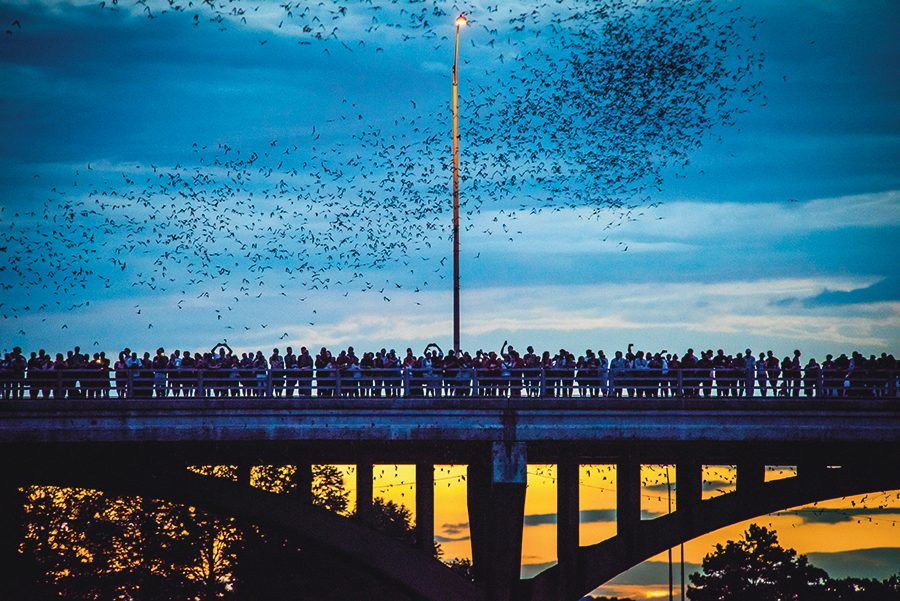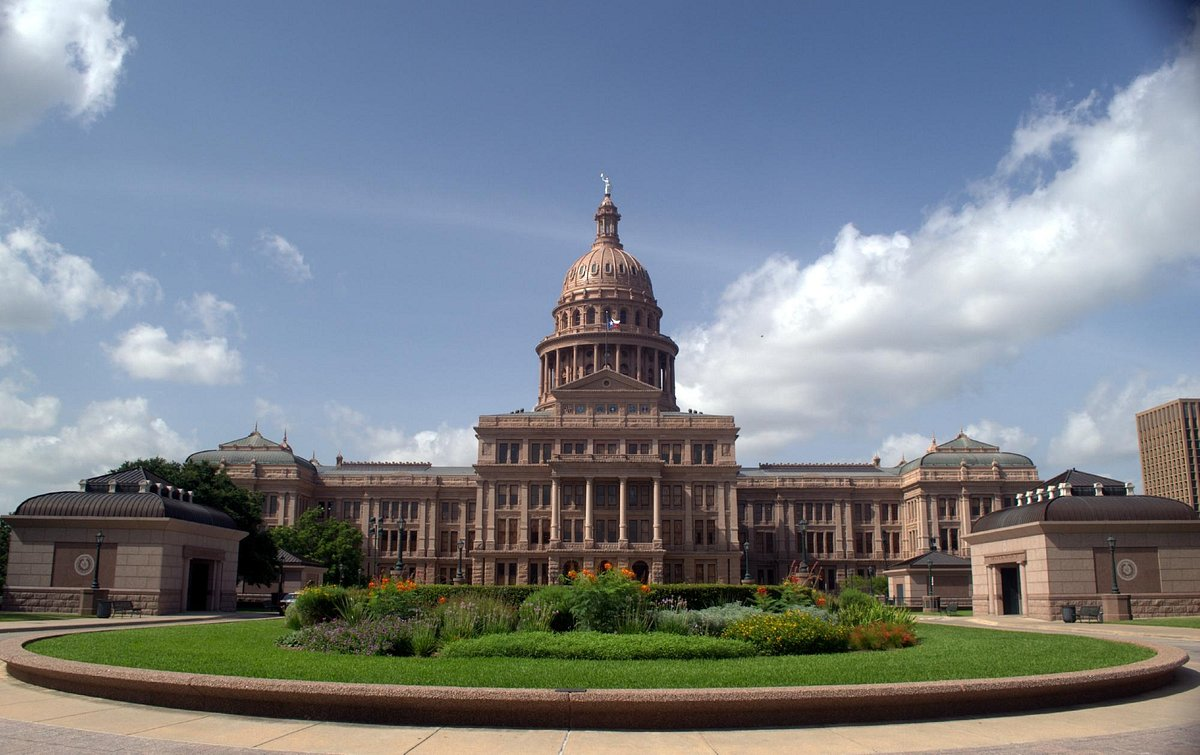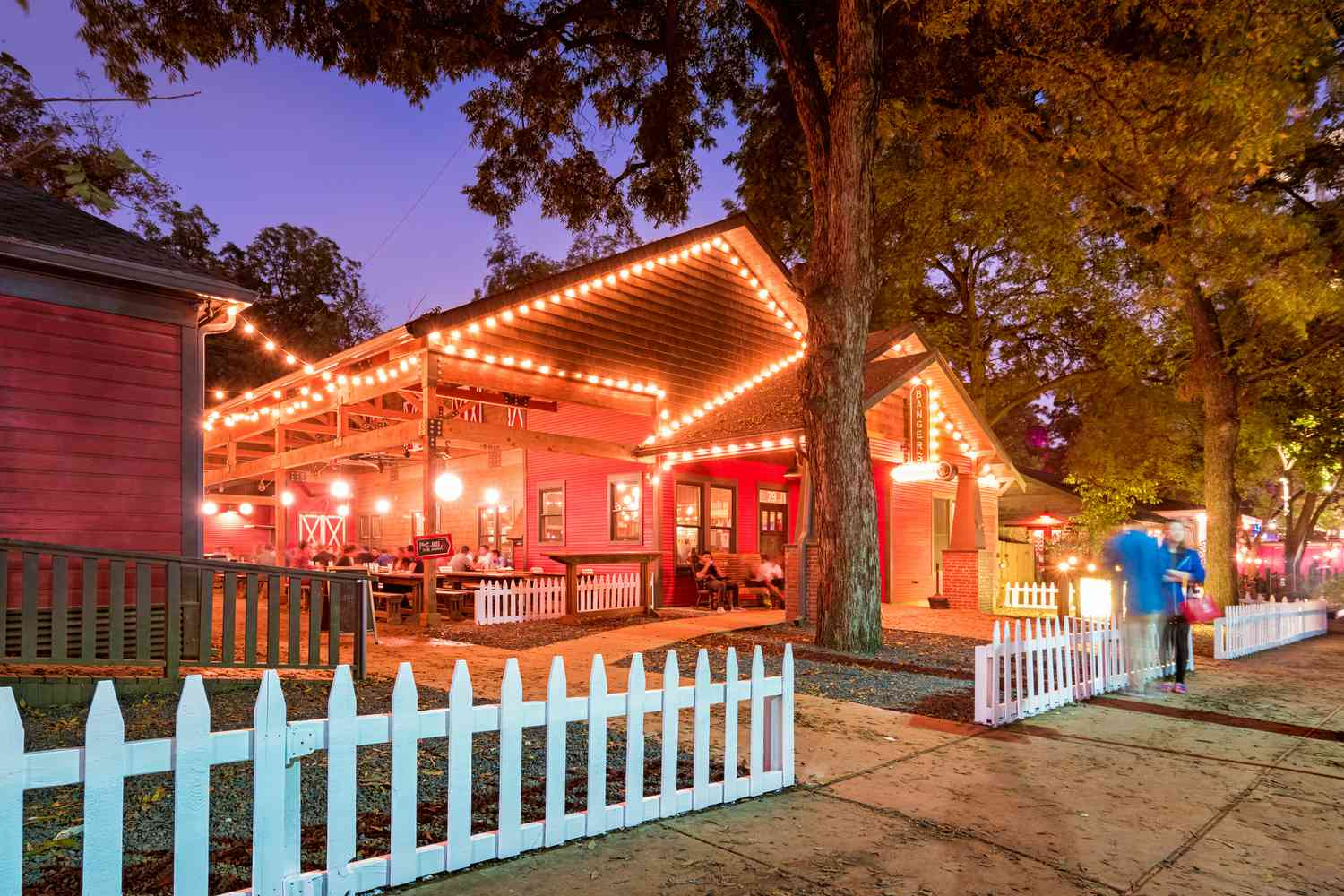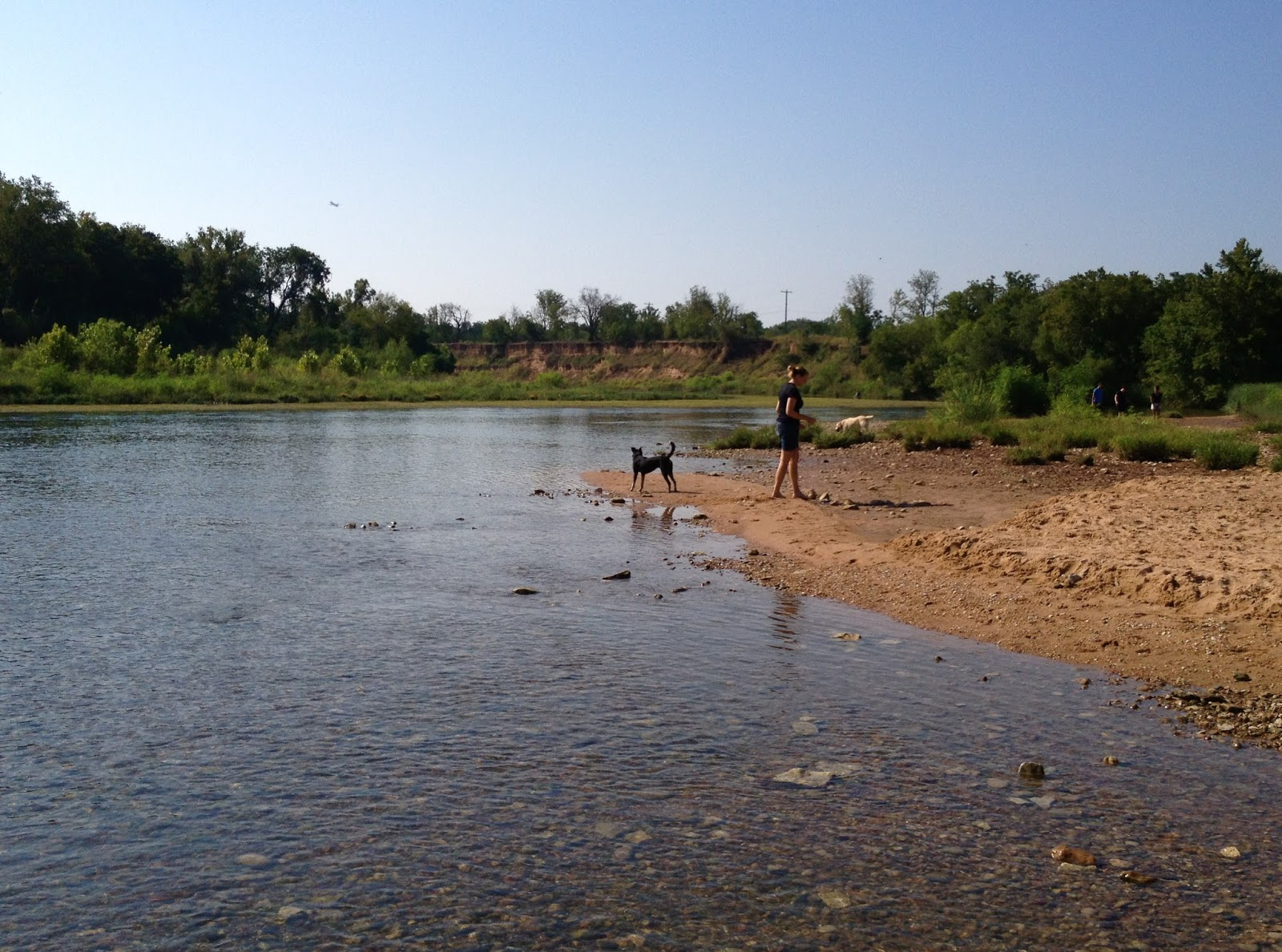Austin dazzles visitors with its legendary music scene, creative spirit, and natural beauty, all easily enjoyed even on a budget.
| Activity | Description |
|---|---|
| Bat-Watch at Congress Avenue Bridge | Watch 1.5 million bats fly out at dusk. |
| Explore the Texas State Capitol | Tour the capitol and visitors center with exhibits on Texas history. |
| Hike and Swim at Barton Creek Greenbelt | Enjoy trails, swimming holes, and waterfalls. |
| Shop South Congress Avenue | Browse eclectic shops and enjoy the vibrant street atmosphere. |
| Catch Shows on Sixth Street | Experience live music and entertainment with no cover charge. |
| Relax at Zilker Park & Barton Springs Pool | Explore the park and enjoy the natural spring pool. |
| Peruse the Texas State History Museum | Discover Texas history through interactive exhibits. |
| Sample the Scene on Rainey Street | Enjoy the nightlife and architecture of this vibrant area. |
| Explore Nature Preserves | Visit city parks and preserves for hiking and nature. |
| Grab Gallery Tours at UT Austin | Explore art and performances at the university for free. |
Beyond the city’s many free festivals and events, tourists can visit top Austin museums with no admission fees every day plus experience gorgeous outdoor spaces, historic sites, and local culture at no cost. For affordable Austin fun, make sure to include these premier attractions on an itinerary.
Bat-Watch at Congress Avenue Bridge

Name and Location: The Congress Avenue Bridge bats refer to the Mexican free-tailed bat colony that lives under the Congress Avenue Bridge in downtown Austin over Lady Bird Lake.
History and Significance: Over 1.5 million bats roost under the bridge from spring to fall, making it one of the largest urban bat colonies. Their nightly emergence is an iconic Austin event. The bridge was built in 1910.
What to Expect: Visitors can watch from various vantage points as the bats emerge en masse at dusk to feed. Peak months are June and August. Experts and equipment provided by local conservation groups educate on the bats.
Visitor Information: Free bat watches occur from the Stateside at Congress bridge or aboard boats like Capital Cruises. Donations support urban bat research and protection. Peak season is May through October.
Each summer evening at dusk, crowds flock to the Ann W. Richards Congress Avenue Bridge, locally known as “Bat Bridge,” connecting downtown Austin over Lady Bird Lake to witness a awe-inspiring natural display as roughly 1.5 million Mexican free-tailed bats emerge from crevices beneath the bridge on their nightly insect hunt. Arrive early to watch the bats start peeking out before the breathtaking main fly-out when they fill the dimming sky in columns. Local nonprofits like Bat Conservation International offer engaging (and free!) educational sessions about Austin’s beloved winged residents on the bridge’s south bank.
Explore the Texas State Capitol and Visitors Center

Name and Location: The Texas State Capitol and Visitors Center is located in downtown Austin. It sits on a hilltop overlooking the city at 1100 Congress Ave.
History and Significance: Completed in 1888, the Texas State Capitol building has stately architecture and is open to the public for free tours. It is an active government office and National Historic Landmark. The underground Visitor Center opened in 2008.
What to Expect: Visitors can explore the Capitol interior of floors filled with offices, chambers, libraries, archives and museum-quality artifacts. Guided tours provide historical facts and access to restricted areas like the House and Senate floors.
Visitor Information: The Capitol and Visitor Center are open Monday–Saturday. Free guided tours are available on a first-come basis, no reservations. Security screenings required to enter buildings.
The soaring 288-foot pink granite State Capitol ranks as one of the country’s tallest capitol buildings, while the adjoining Texas State Capitol Visitors Center educates guests on Texas government, history and culture through multimedia exhibits and a gift shop. Free hour-long tours of the National Historic Landmark capitol run frequently and give insider views of the lavish House and Senate chambers, ROTUNDA art and artifacts, governor’s reception room decorated with Texas memorabilia gifts, and more. Outside, stroll the tree-lined grounds to appreciate stately monuments and statues honoring prominent state figures.
Hike and Swim at Barton Creek Greenbelt

Name and Location: The Barton Creek Greenbelt is a 7.5 mile public recreation area along Barton Creek in the Barton Hills neighborhood of south Austin.
History and Significance: Saved from development in the 1960s, it offers trails, cliffs, waterfalls, swimming holes that span over 300 acres of lush preserve enjoyed by generations.
What to Expect: Visitors can hike, bike, swim and rock climb through scenic terrain. Highlights include the Campbell’s Hole swimming area and the 60-foot Rock Waterfall.
Visitor Information: The Greenbelt trails, rocks and pools are open daily without fee. Expect crowds on hot weekends. Bring water shoes to explore water access points.
Nestled amid the cityscape but feeling worlds away, the beloved 7.8-mile Barton Creek Greenbelt offers nearly 13 miles of recreation trails following sparkling Barton Creek through gorgeous Hill Country terrain dotted with swimming holes, limestone bluffs, waterfalls and more. Leashed dogs are welcome on Greenbelt trails. For a short hike under 1.5 miles round-trip, access the peaceful paths behind Barton Springs Pool near Zilker Park and head downstream to scout views of Twin and Campbell’s Hole plus the dramatic “Twin Falls.”
Shop South Congress Avenue

Name and Location: South Congress Avenue, nicknamed SoCo, refers to the bustling shopping and dining district located on South Congress Avenue between Lady Bird Lake and Oltorf Street.
History and Significance: Anchored by the historic Hotel San José, it has transformed into a cultural hub, attracting creatives, foodies and shoppers to its locally-owned boutiques, eateries and art galleries.
What to Expect: Visitors browse through a vibrant array of stores, like Uncommon Objects vintage emporium, Lucy in Disguise costume shop, Allen boots, and Kendra Scott jewelry alongside hip restaurants and lively nightlife venues.
Visitor Information: Shops and restaurants are largely open daily. Weekends draw the biggest crowds. The district is walkable or can be accessed by rideshare, bus or bike. Free 2-hour parking is available.
Centered along lively South Congress Avenue through the Travis Heights area, the SoCo eclectic shopping district claims some of Austin’s funkiest stores alongside trendy eateries, coffee shops, food trailers and cultural attractions like the Continental Gallery music venue. Well-known SoCo stops for unique local wares include Allen’s Boots, Lucy in Disguise vintage costumes and Uncommon Objects quirky antique finds. While handing over dollars is likely, simply wandering SoCo’s bustling drag to admire murals, old Victorian homes and the famous “I Love You So Much” phrase painted on Jo’s Coffee downtown remains a quintessential (and free) Austin experience.
Catch Shows on Sixth Street

Name and Location: Sixth Street in downtown Austin refers to the six-block entertainment district centered along 6th Street between Congress and Interstate 35.
History and Significance: As the heart of Austin’s music scene, it offers lively nightlife from jazz and country to rock acts inside iconic venues like Esther’s Follies comedy club, Maggie Mae’s Gibson Room, The Blind Pig Pub and more.
What to Expect: Visitors can bar hop between venues with live music spilling into the streets. Festivals, watch parties and street performers further the high-energy atmosphere well into the night enhanced by neon lights.
Visitor Information: Most bars open nightly and don’t charge covers. Weekend and special event nights draw peak crowds. Rideshares provide easiest access with metered parking available.
Without a cover charge, tourists can soak in infectious live music energy along downtown’s famed Sixth Street entertainment corridor almost any night of the week thanks to free gigs at legendary music halls and bars like Maggie Mae’s, The Driskill’s 1886 Cafe & Bakery, Esther’s Follies comedy theatre, Speakeasy and more. Local musicians, touring acts and bands of all genres frequently offer gratis shows in the Sixth Street heart of the “Live Music Capital of the World.” Days bring shopping ops at landmark record stores like Waterloo Records or music instrument shops along the storied strip too.
Relax at Zilker Park & Barton Springs Pool

Name and Location: Zilker Park and Barton Springs Pool are located adjacent to each other along Barton Springs Road southwest of downtown Austin.
History and Significance: Zilker Park comprises over 350 acres of green space including Barton Springs, a natural spring-fed swimming pool open since 1910 and essential for Austin summers.
What to Expect: Visitors enjoy amenities like trails, botanical garden, museums, playscapes and cultural events at the park while Barton Springs provides cool 68°F swimming surrounded by limestone cliffs in an iconic setting.
Visitor Information: Zilker Park grounds are open daily without fee. Barton Springs Pool costs a few dollars to enter with passes available. Both close occasionally for events or maintenance. Public parking fills quickly.
Spreading across 351 acres adjacent to the popular Barton Springs section of the Greenbelt trails, beloved “Jewel of Austin” Zilker Park welcomes over five million annual visitors to its gardens, picnic grounds, disc golf course, kayak rentals, miniature train and more family fun all free to enjoy. Barton Springs Pool within the park offers year-round 68-degree crystal-clear swimming fed by natural springs. While the pool has a nominal entry fee in season, simply admiring the tranquil turquoise waters and scenic views from Loop 360 Bridge above encore Austin’s unique interface between city and nature.
Peruse the Texas State History Museum

Name and Location: The Bullock Texas State History Museum is located near the Texas State Capitol grounds at 1800 Congress Avenue in Austin.
History and Significance: Founded in 2001, the museum houses exhibitions exploring cowboy culture, Native American life, Spanish colonization, the Texas oil boom and more while hosting cultural events.
What to Expect: Visitors can discover the Lone Star State’s natural landscapes, revolution and independence, civil rights movements and legendary leaders through historic artifacts, films, artwork and hands-on displays in the three-floor space.
Visitor Information: The museum is open daily for a fee of $14 with discounts available. Free tours offered. Special exhibits incur additional charges. On-site parking garage available.
Tracing epic milestones from indigenous cultures and Spanish colonizers to the Space Race, the Bob Bullock Texas State History Museum immerses visitors in the larger-than-life story of the Lone Star State through several floors of interactive exhibits spanning ancient fossils and conquistador riches to Julia Child’s kitchen and 1960s pop culture. History buffs of all ages appreciate eye-catching artifacts like Native weapons, a 1900 oil rig, Jack Ruby’s hat from after JFK’s assassination, cowboy gear, Juneteenth rations and beyond. From the prehistoric past to present, the journey through this extensive museum remains free and engrossing.
Sample the Scene on Rainey Street

Name and Location: Rainey Street refers to the historical district next to Lady Bird Lake downtown featuring converted bungalows into bars, gastropubs and eateries.
History and Significance: It originated as Austin’s first suburbs in the 1870s before morphing into a nightlife hub in recent decades while retaining its charm and character. Views overlook downtown.
What to Expect: Patrons can bar hop between the Victorian-style houses sampling local beers, wines, cocktails and upscale bar fare. Outdoor patios, food trucks, live music, games and people watching are highlights.
Visitor Information: Most venues open late afternoon to late night, often with no cover charge. It draws young professionals and an artsy crowd. Rideshare or walk suggested for access due to limited parking.
Centered along Rainey Street downtown in the hip Riverfront district filled with trendy bars, acclaimed restaurants and converted bungalows hosting after-hours dance parties, this nightlife playground makes an energetic walkable area to mingle with locals over afternoon drinks or simply admire the vibrant Victorian architecture and street art. Tourists will want to Instagram popular murals like the “Greetings from Austin” postcard wall at Craft Pride pub or the butterflies in Angela Lombardi Turallo Park. And from open to close, Rainey stays lively with good people watching as a budget-friendly taste of why Austin takes pride in keeping things “weird.”
Explore Nature Preserves

Name and Location: Austin boasts over 20 preserves with scenic trails offering access to native wildlife, plants and parklands across the city through Austin Parks and Recreation.
History and Significance: Natural areas like Roy G. Guerrero Colorado River Park, Walnut Creek Park, and Emma Long Metropolitan Park preserve pockets of Hill Country terrain, protecting ecological diversity.
What to Expect: Hikers, mountain bikers and others explore lush landscapes filled with wetlands, rivers, forests and prairie lands. Birdwatching spots, playgrounds, sports fields and picnic sites provide recreation.
Visitor Information: Most preserves contain free access trails open daily dawn to dusk. Pets must be leashed. Emma Long charges park entry fees on weekends. Public transit is limited so private transport suggested.
With over 20,000 acres of green space blanketing Austin, nature always seems beckoningly close for hiking and outdoor adventures even inside city limits. Must-visit wildlife preserves like Hornsby Bend near the airport or Roy G. Guerrero Colorado River Park downtown offer miles of trails for wildlife watching, wildflower spotting, river access and city skyline views – all free to use year-round! Other renowned nature spots spanning East to West Austin include Walter E. Long Park’s scenic trail network overlooking Lake Austin plusrestrung Bull Creek District Park covering almost 800 acres of rustic Hill Country terrain welcoming outdoor enthusiasts escaping Austin concrete to refreshing natural playgrounds.
Grab Gallery Tours at UT Austin

Name and Location: The University of Texas at Austin campus along Speedway Street houses several acclaimed museums and galleries featuring diverse art collections.
History and Significance: Cultural repositories like the Blanton Museum of Art, the Harry Ransom Center and Texas Memorial Museum enrich the community with art, performances and preservation of Texan heritage.
What to Expect: Visitors can admire creative masterpieces both classic and quirky across various disciplines—paintings, photography, sculpture, film, literature—through permanent installations and special exhibitions in the spaces.
Visitor Information: Hours and admission prices vary by venue, but discounted passes are available. Galleries are accessible through UT Austin’s vast pedestrian campus networked by Metro buses, Capital MetroRail and bike sharing.
The University of Texas Austin campus promises many free opportunities for visitors like contemplating provocative contemporary art at the university’s esteemed Blanton Museum of Art open every day without charge. Complimentary docent-led tours run frequently examining favorite Blanton works like the towering Picasso “Woman in a Red Armchair” guarding the staircase. The school’s Performing Arts Center offers free dance and theatre productions staged by talented student performers as well. Check event calendars before visiting to experience the arts at UT Austin gratis.
Conclusion
From bats spiraling over downtown each dusk to musicians rocking out nightly on Sixth Street, Austin earns its “Keep It Weird” reputation through natural spectacles, cultural experiences, and entertainment welcoming to all budgets. Wandering trails along Barton Creek and through sculpture gardens at Zilker Park connects with Austin’s outdoor-loving attitude, while gawking at the epic Bob Bullock History Museum traces Texas-sized stories shaping the region’s pride and personas over the centuries. Beyond booze-filled bar crawls like Rainey Street or iconic shopping and people-watching drags like South Congress Avenue, this city flaunts fabulous free options for filling any length itinerary without paying admission.

